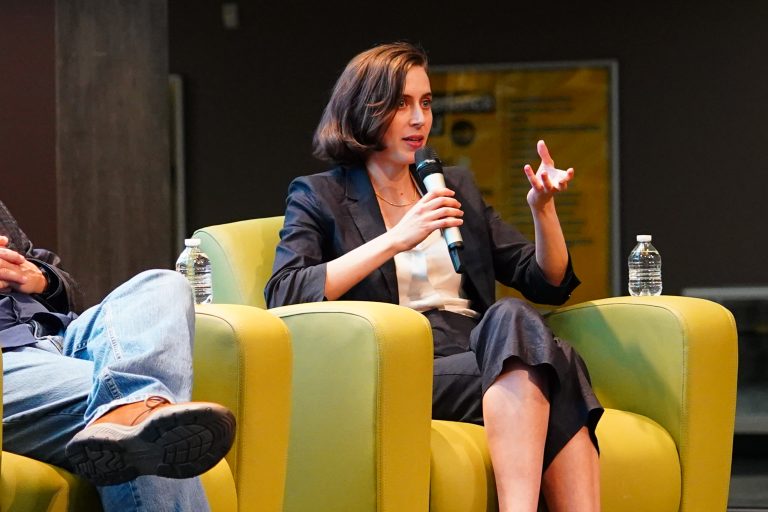Ava Kofman, winner of the 2023 Barlett & Steele Award for Outstanding Young Journalist, gave readers a horrifying look into the world of a hospice industry that deliberately targets vulnerable individuals in order to generate an income. Her investigation, published by ProPublica and the New Yorker, took work to conduct and Kofman was up for the challenge – it was a story that deserved to be told.
While there has been reporting on the hospice industry over the years, Kofman sought a different approach: focusing on the business practices of the hospice industry and the methods employed to keep the business booming.
Kofman highlighted Marsha Farmer, a worker within the industry who grew tired of its exploitation of patients. Farmer’s job was to find recruits for the company regardless of their health status and to exaggerate their health condition as fatal.
Workers for these companies, such as Farmer, were put under intense pressure to meet their quotas. The task was simple: convince people that they were terminally ill and in need of hospice care.
Kofman’s investigation also found that in several states with lax regulation, dozens of hospice companies were springing up, many with the very same address and no clear indication of who the owners are.
Kofman originally sought to focus on an ongoing case, but soon realized it would be impossible as False Claims Act whistleblowers are barred from talking to the press for fear of public disclosure. Instead, she opted to focus on a case that already concluded.
“This case, even though it had happened few years earlier, would provide me with a really unique window. It also would allow me to analyze something that actually hadn’t really been analyzed as much in prior coverage,” Kofman said.
This idea stemmed from another investigation by the Los Angeles Times that highlighted hospice growth in California. When Kofman saw that data, she knew how big the industry was, and how much more ground needed to be covered.
“I read through all of the lawsuits that had been filed by whistleblowers over the last two decades,” Kofman said.
Kofman sorted through thick court cases, complaints, literature on for-profit versus nonprofit hospices, and inspector general reports, among other documentary sources. She made phone calls to entities associated with the field – whistleblowers, lawyers, inspectors, key experts, and stakeholders in order to develop this piece.
In total, the investigation took about eight months, from when she started researching the industry in February until it was published in November of 2022.
Kofman’s biggest struggles were logistical ones, such as whether the focus of the story should be on individual instances of fraud or the systemic issues represented by large corporations. Another issue she encountered was how to weave in all the necessary details in a way that flowed properly and wasn’t confusing for the reader.
Aside from structural issues, Kofman initially had difficulty finding sources because many of the victims of bad hospice care had already died. She soon learned that there is no national advocacy group for hospice patients and therefore no national registry exists for her to start making calls. There is also a dearth of wrongful death lawsuits in hospice given the assumption that those people were “supposed” to die, making it harder to corroborate cases. This lack of sources made it that much more important for Koffman to be vigilant in checking medical records and documentation in order to get the story right.
In the end, her work proved a success. The article made waves: industry leaders began pushing for additional protection and oversight, including an immediate investigation into some of the hospices identified in the piece and a push for policy reforms.
Kofman’s advice to younger journalists is to create their own path. “Follow things that you’re naturally interested in because that’ll show and come through in the story. There’s stories in your backyard, there’s also a lot of stories in your internet browser. There’s a lot of things that people are writing about in a way that you might have a different insight on or perspective on,” she said.
“I’ve learned over the years that different people bring their different personalities and personality styles to the job. And what can be really fun is when you find out how to make the most out of how you like to connect with people and use those connections to find out new things and tell important stories.”











